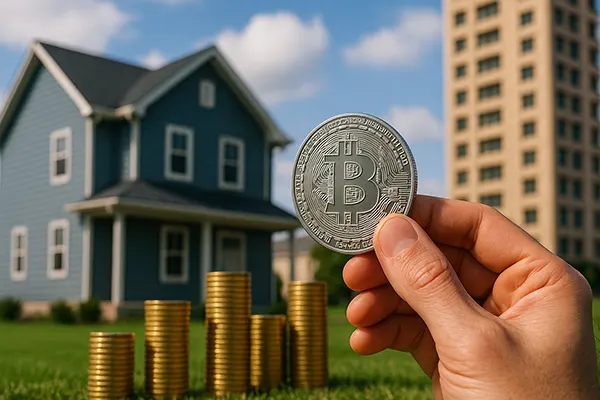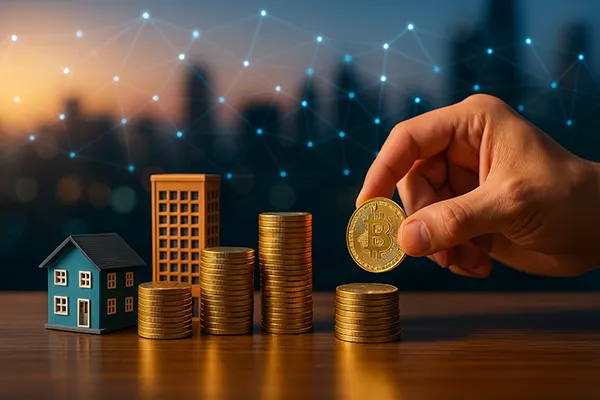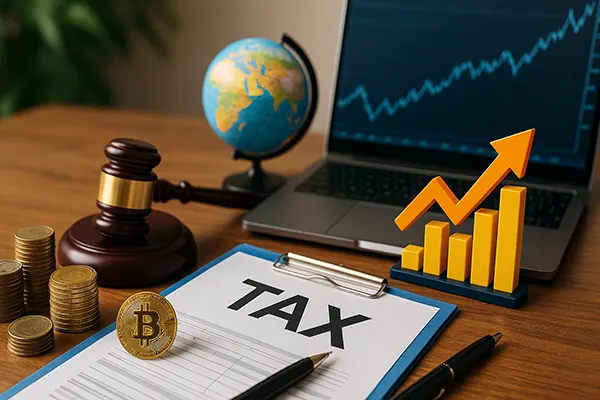Real Estate Tokenisation: How Digital Assets Are Reshaping the Market
Real estate has traditionally been considered a safe but highly capital-intensive investment. The emergence of tokenisation is changing this perception, enabling investors to buy fractional shares of property through blockchain technology. In 2025, this innovation is rapidly gaining traction as a means of democratising access to one of the most expensive asset classes, offering new opportunities but also new challenges.
What Real Estate Tokenisation Means
Real estate tokenisation is the process of converting property ownership rights into digital tokens recorded on a blockchain. These tokens represent a specific share of an asset, whether it is a residential apartment, commercial building, or land. Blockchain ensures transparency, immutability, and secure transactions, making the model appealing for both institutional and individual investors.
The tokenisation process typically involves creating a legal entity, such as a special purpose vehicle (SPV), which owns the property. This entity then issues digital tokens corresponding to ownership shares. Investors purchase these tokens, gaining rights to a proportional part of profits, such as rental income or capital appreciation.
As of 2025, tokenised assets are primarily issued on Ethereum and Polygon, with platforms integrating smart contracts to automate dividend distribution and record transfers of ownership. This approach reduces administrative costs and accelerates settlement processes compared to traditional property transactions.
Examples of Active Tokenisation Platforms
Several companies already operate marketplaces for tokenised property. Platforms like RealT in the United States, Brickken in Europe, and SolidBlock in Israel offer tokenised shares of rental properties. Minimal entry investments start from around €50 to €100, allowing small-scale investors to participate in markets previously dominated by large capital holders.
These platforms are subject to varying regulations depending on jurisdiction. In the EU, for example, tokenised assets often fall under securities law, requiring licensing from financial regulators. In the United States, the Securities and Exchange Commission (SEC) provides oversight, ensuring compliance with investor protection rules.
Although the market is still young, growing adoption by licensed entities is helping build trust. This gradual formalisation indicates that tokenised real estate is moving from a niche experiment to a legitimate investment option.
Advantages and Risks for Investors
One of the primary advantages of tokenised real estate is liquidity. Unlike traditional property, which can take months to sell, tokens can be traded on secondary markets, providing investors with quicker access to capital. Additionally, fractional ownership opens opportunities for diversification across multiple assets and locations.
Investors also benefit from transparent transaction records on the blockchain. Smart contracts automate income distribution, ensuring that payments are processed without intermediaries. This can reduce fees and administrative complexity, making real estate investment more efficient.
However, risks remain significant. Market volatility affects token prices, and regulatory frameworks are still evolving. Some jurisdictions have yet to establish clear legal structures for ownership rights linked to tokens, creating uncertainty. Cybersecurity threats and platform reliability also remain critical concerns.
How to Participate in Tokenised Projects
For individual investors, the first step is selecting a reliable provider. It is essential to verify whether the platform is licensed in its jurisdiction and whether assets are legally tied to a registered entity. Reputable marketplaces provide clear documentation outlining investor rights and obligations.
Next, investors need to create a digital wallet to store their tokens. Wallets must be secured with strong authentication methods, as tokenised assets are subject to the same security risks as cryptocurrencies. Many platforms also offer custodial services for users unfamiliar with wallet management.
Participation typically requires identity verification (KYC) and compliance with anti-money laundering regulations. Once onboarded, investors can browse available projects, review financial data, and purchase tokens representing fractional ownership of chosen properties.

Comparing Tokenised and Traditional Property Investment
Traditional real estate investment usually requires significant upfront capital, long holding periods, and complex legal processes. Tokenisation reduces these barriers by allowing fractional entry and simplified transactions through blockchain technology. This makes the asset class more inclusive and flexible.
On the other hand, conventional property investment is often seen as more secure because it is fully embedded within established legal frameworks. Physical property ownership documents and long-standing regulations provide stability that tokenised investments are still building toward.
For many investors, tokenisation may serve as a complement rather than a replacement. It allows portfolio diversification while maintaining exposure to traditional real estate, combining innovation with stability.
The Future Outlook for Tokenised Real Estate
Industry analysts expect tokenised real estate to grow steadily in 2025 and beyond, driven by increasing regulatory clarity and technological maturity. As secondary markets develop, liquidity is likely to improve, making tokens more attractive to both retail and institutional investors.
Financial institutions are beginning to experiment with their own tokenisation models, indicating that mainstream adoption may be closer than previously thought. Partnerships between real estate companies and blockchain firms are also expanding, further legitimising the concept.
While tokenised real estate is unlikely to replace traditional property ownership entirely, it is already reshaping the investment landscape. By lowering entry barriers and providing new liquidity channels, tokenisation has the potential to redefine how people access and profit from one of the world’s oldest asset classes.



